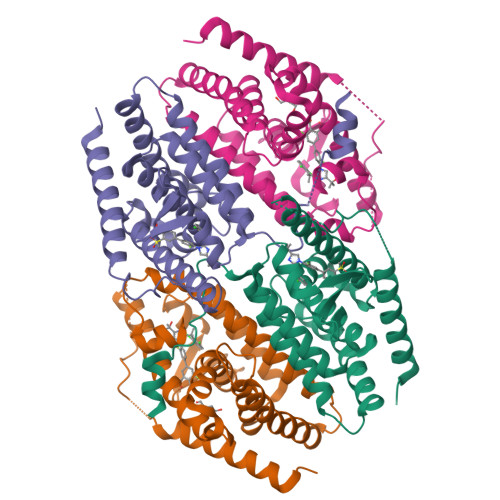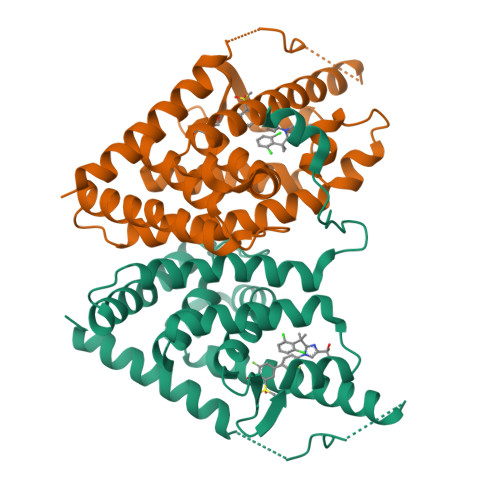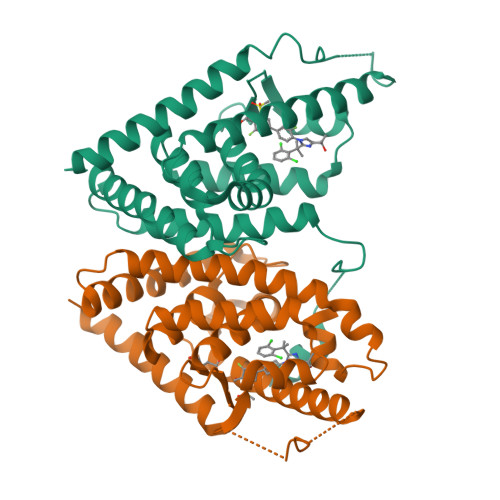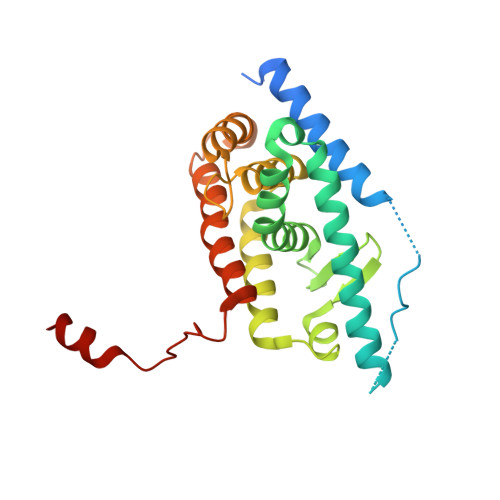Discovery of Highly Potent Liver X Receptor beta Agonists.
Kick, E.K., Busch, B.B., Martin, R., Stevens, W.C., Bollu, V., Xie, Y., Boren, B.C., Nyman, M.C., Nanao, M.H., Nguyen, L., Plonowski, A., Schulman, I.G., Yan, G., Zhang, H., Hou, X., Valente, M.N., Narayanan, R., Behnia, K., Rodrigues, A.D., Brock, B., Smalley, J., Cantor, G.H., Lupisella, J., Sleph, P., Grimm, D., Ostrowski, J., Wexler, R.R., Kirchgessner, T., Mohan, R.(2016) ACS Med Chem Lett 7: 1207-1212
- PubMed: 27994765
- DOI: https://doi.org/10.1021/acsmedchemlett.6b00234
- Primary Citation of Related Structures:
5JY3 - PubMed Abstract:
Introducing a uniquely substituted phenyl sulfone into a series of biphenyl imidazole liver X receptor (LXR) agonists afforded a dramatic potency improvement for induction of ATP binding cassette transporters, ABCA1 and ABCG1, in human whole blood. The agonist series demonstrated robust LXRβ activity (>70%) with low partial LXRα agonist activity (<25%) in cell assays, providing a window between desired blood cell ABCG1 gene induction in cynomolgus monkeys and modest elevation of plasma triglycerides for agonist 15 . The addition of polarity to the phenyl sulfone also reduced binding to the plasma protein, human α-1-acid glycoprotein. Agonist 15 was selected for clinical development based on the favorable combination of in vitro properties, excellent pharmacokinetic parameters, and a favorable lipid profile.
Organizational Affiliation:
Department of Discovery Chemistry, Department of Cardiovascular Biology, Pharmaceutical Candidate Optimization, Research & Development, Bristol-Myers Squibb , P.O. Box 5400, Princeton, New Jersey 08543-5400, United States.





















